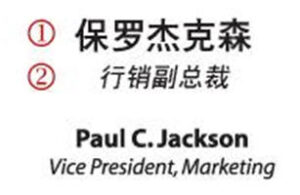About author Jon Ritzdorf: Jon serves as the Acclaro in-house globalization architect. He holds an M.A. in Chinese Translation and draws on more than a decade of experience for both his professional work and as an adjunct professor at New York University and the Monterey Institute of International Studies.
What are some of the latest trends in China?

Micro-blogging (i.e. Twitter) has really taken off in China. The clear leader is Sina Weibo, launched in August 2009, with nearly 100 million users, according to Forbes.com. If you’re trying to create a loyal following and/or promote your products directly to Chinese customers, definitely consider a Chinese micro-blog.
As with other countries, mobile advertising is gaining momentum. While smart phone penetration is still relatively low overall, the youth market is leading the trend of using their phones for internet use and app downloads (and with these, come mobile advertising). According to Nielsen, 73% of Chinese youth ages 15-24 reported using the mobile internet in the previous 30 days (versus 48% in the U.S. and 46% in the UK). Look for mobile internet use and mobile advertising to really ramp up in the next few years.

For business cards, how do you write western names? Should you give the person a “Chinese” name or phonetically spell out the western name?
Typically I have seen a mix. Phonetic equivalency of the personal name in Chinese (see number one below) with the English name below that (number two below).

How do you write out western company names in Chinese? Do you alter them to conform to the Chinese language or stay the exact western name?
This is the tricky question and there are a lot of options:
- Phonetically write out the company name
- Create a meaningful name with positive imagery in Chinese that conveys the same feel as the English name
- Ignore the English completely and come up with a good Chinese name that explains the service/good
- The most difficult to achieve is to come up with a name that is phonetically similar and also conveys a good meaning in Chinese. This is the Coca-cola approach. Chinese Romanization is “ke kou ke le” meaning “refreshing and mouth happiness”.
How do you present your business card to a Chinese contact?
When you receive and give things, use both hands (no bowing necessary, but a nod of the head is common). Also, with business cards, don’t write notes on the card while in the presence of the person who gave it to you.
What is the norm with business agreements? Are they traditionally more formal, written and signed or is a spoken agreement enough?
In general, spoken agreements are even more binding than written ones. This is very different from our Western idea of a lengthy written, signed in triplicate, lawyer-reviewed contract with lots of clauses. In China, all the intricacies of an agreement between business people can’t be expected to be nailed down on paper. If you do sign an agreement, don’t expect it to necessarily be binding in the eyes of your Chinese counterpart. In short, relationships are built on trust and relationships and a spoken agreement has more weight than something that’s written. When doing business in China, you’ll often hear the word for “relationship”: guanxi (關係).
I need to translate some documents and marketing materials from English into Chinese, what are some of the main items I need to keep in mind?
Chinese characters will contract from their English Roman character equivalents. So, you may have more white space and/or room than with your English. Also, you’ll need to increase your font size. You cannot keep nine or ten point type/fonts, but will need to increase your font size for Chinese characters to at least 11 or 12 point. If not, it won’t be legible.
Think about the images you use. Are they appropriate for the Chinese market? For example, a picture of someone playing golf conveys “relaxation” to an American audience. In China, this would not be the case; relaxation could be shown by eating and drinking at a tea house. Also, think about the colors, icons or symbols you use. Do a complete cultural evaluation of these before using them for your materials for your Chinese customers.
I’d like to use my Chinese translation for an entire region: China, Hong Kong, Taiwan, and Singapore. Can I use the same Chinese translation for this region?
Unfortunately, you won’t be able to take advantage of economies of scale for this example of Chinese translations. Certain countries use Traditional Chinese, while others use Simplified Chinese.
The Traditional Chinese script is used by Hong Kong and Taiwan, while the Simplified script is used by China and Singapore. Not only are the ways characters are written and the style of the language different between the two variants, but also some words are entirely unique. Therefore, I’d recommend two translations to reach the region.
I’ve heard that the Asian New Year is not a good time to do business. Why and how long does this last?
This is correct – during the Asian New Year in East and Southeast Asian countries, nearly everyone returns to their home town to spend time with family. Countries come to a halt in terms of business for two weeks around the holiday. The transportation system (roads, rail, plane, etc) are packed and prices rise.
The actual dates for the New Year change each year since it’s a lunar holiday. In 2012 it’s on January 23, while in 2013 it’s on February 10.
Insights for global growth

Power your strategic growth
Go beyond tactical localization with tailored, strategic solutions that resonate locally and drive growth globally.
Get started




